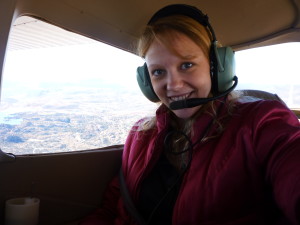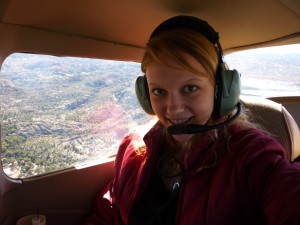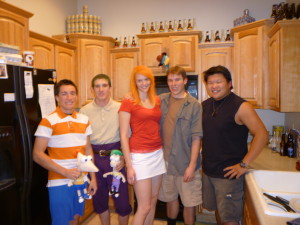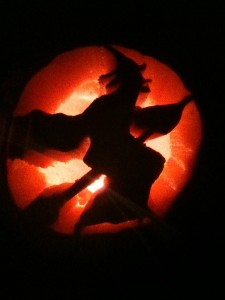
Spring 2010 Graduation on Lower Field - not a cloud in the sky.

Engineering Students prepare to walk across the stage during the Spring 2010 Graduation Ceremony
Several of my friends from different clubs and organizations on campus graduated within the last year and I stayed on campus for three ceremonies.
All students graduate from the university in the same ceremony, including master’s students, and students who come to the Prescott Campus to celebrate their graduation from the World-Wide campus. This is something that I really like about the Embry-Riddle graduation, because I’ve heard from friends at different universities who went to separate graduation ceremonies by college, and didn’t get to see their friends in other degree programs walk.
The graduates are called up by college. The only difference in the undergraduate’s graduation garb, other than the different awards that graduates wear, is the color of the tassel. The robes are all black, and the engineering tassel is orange.
I went to a high school with 2,500 students, and my graduation ceremony was huge. I’ve met students on campus who graduated with over 2,000 students just in their class. The Embry-Riddle graduating class is rather small because students can graduate in either the spring or the fall and the number of students at the school is relatively small. In my opinion, this results in a much more enjoyable graduation experience for the audience member.
The two semester ceremonies are fairly different. So far Embry-Riddle’s Prescott Campus has not limited the number of guests you can bring to graduation. Since the number of people who graduate in the Fall is significantly smaller than the number who graduate in the Spring, that Fall graduation ceremony is held in the Activity Center on campus. The Spring semester is held on the sports fields.
Both graduation ceremony locations have advantages. During the fall commencement ceremony, your view from the top of the bleachers is looking down at the graduates, which is great for taking pictures from wherever you are sitting. It is also indoors, so you don’t have to worry about the weather, bugs, wind, or wearing sun block.
On the other hand the outdoor graduation is beautiful. There are very few days during the year that Prescott isn’t sunny. One of the other advantages of an outdoor graduation is the opportunity for former Embry-Riddle students to perform flyovers. There are plenty of places for your family to congregate afterwards for pictures, and there are several places where you can move up to take pictures of people as they walk across the stage.
It was bittersweet to see some of my friends graduate. On the one hand I was excited for them to start their new jobs in new places with good paychecks and huge opportunities before them. On the other hand, it was kind of an end of an era of hanging out with those friends. Going to graduation gave me a good idea of what to expect for my own graduation, and I truly can’t wait. Another good group of friends will be graduating with me and I expect that my own graduation will be really fun. May 7, 2011, here I come!








 A View of Campus from the air.
A View of Campus from the air.














